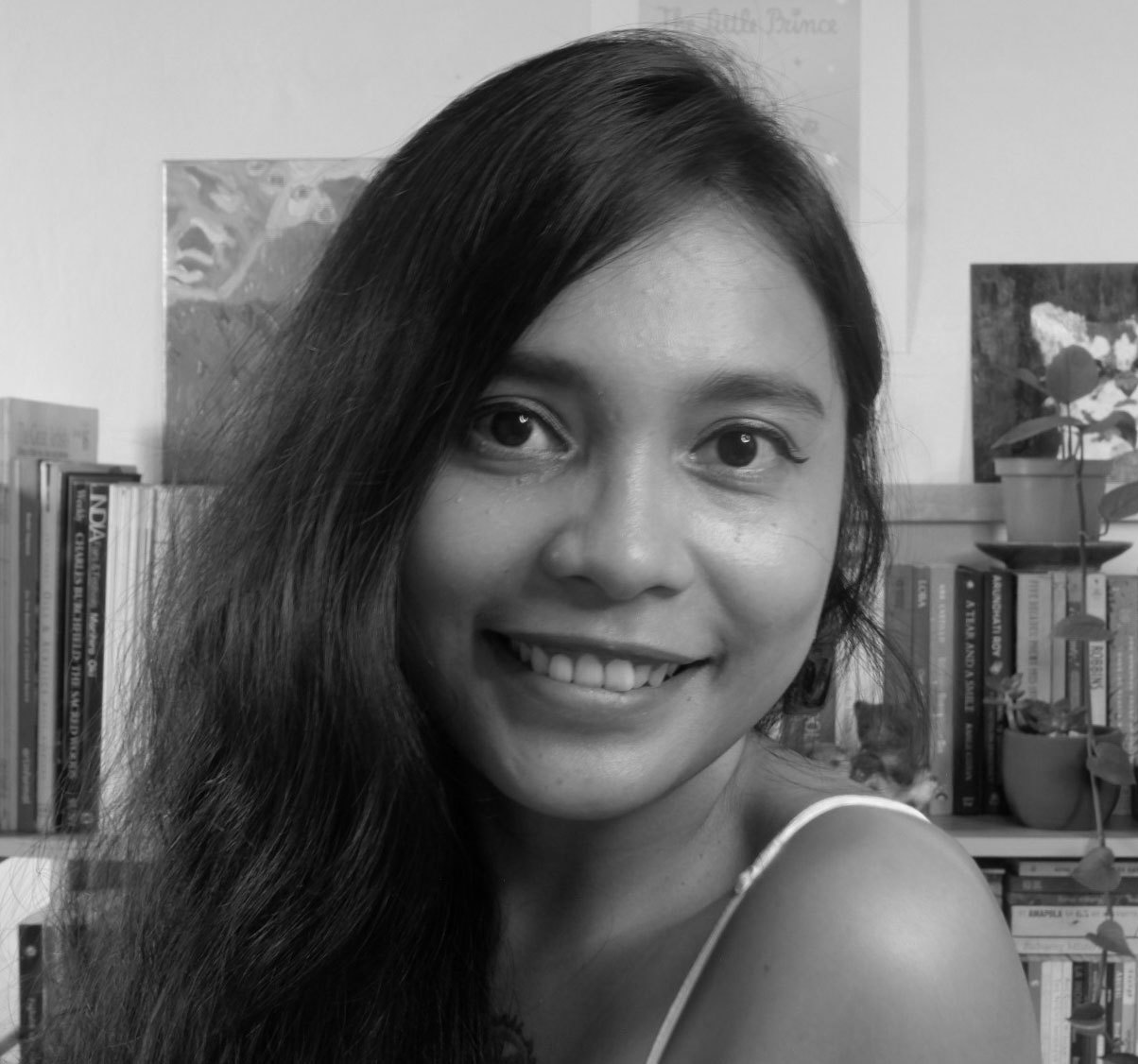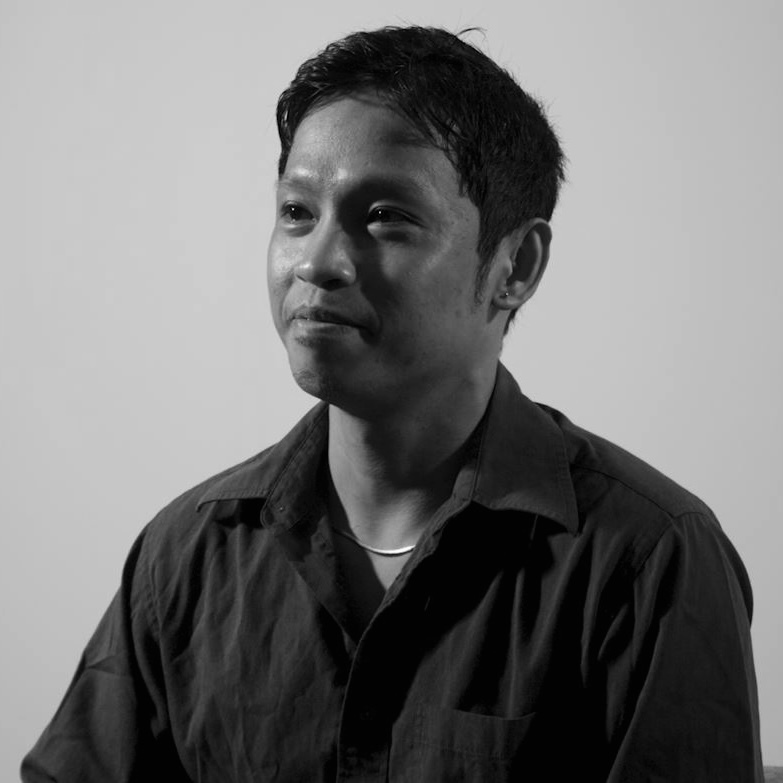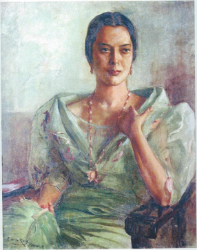To four million Filipinos, Metro Manila is a tenuous home. They are informal settlers, living in urban labyrinths: crowded neighborhoods accessible by narrow alleys that meander through a jungle of jerry-built dwellings of dubious concrete, fragile plywood, and rusty iron sheets. Slums that in some places are just a glance away from prosperity, but always at the periphery of hope.
Rodel Tapaya explored these informal settlements to contemplative effect in Urban Labyrinth, his first solo show in the Philippines since 2014, which was on view at the Ayala Museum from February 23 to April 15 and co-presented by Arndt Art Agency. In 18 new works consisting of paintings on canvas, under glass, and on paper as well as a rare single-channel video, Tapaya plays the role of urban anthropologist, offering an incisive look at life in Manila’s slums and a candid reflection on the social and political issues they face.
The exhibition may be likened to a journey through the eponymous labyrinth. It starts with Urban Landscapes, a series of expansive paintings that simulate a sense of place by visually situating the viewer in the cramped, riotous milieu of the slums.
The Comedy, Parody and Tragedy(2018), one of the largest works ever made by Tapaya, commanded an entire wall of the ground floor gallery and impressed with its sheer scale and composition. It depicts the looban(interior of a shantytown) as a surreal theater, where denizens are ghostly forms and otherworldly characters going about their lives – mothers catching up on the latest gossip; proverbial drunks stalked by a winged figure that calls to mind a local gin’s logo; lovers sharing an intimate moment; a hapless soul being punched to a pulp. The painting’s under-finished style, discordant hues, loose brushwork, and disorienting vanishing points aptly evoke the spontaneous cacophony of slum life.
Tapaya then shifts our gaze to thorny but timely issues in vivid “folk narrative” works. In these paintings, the artist appropriates Philippine folktale and myth and gives them a contemporary visual language. For instance, he tackles the mentality of easy riches and quick success in Instant Gratification(2018), which draws inspiration from Jose Rizal’s classic fable, The Monkey and the Turtle(1889). Monkeys make off with the upper half of trees, eager to enjoy their fruits, oblivious to the folly of their myopia; only the turtle has the foresight and patience to replant the stump, which eventually flourishes into a new fruit-bearing tree. In the foreground are images of a slot machine and a lottery kiosk – a pointed critique of many Filipinos’ lack of long-term thinking and naive faith in chance.
Then there is Aswangs Enter the City(2018), which portrays a policeman as the titular shapeshifter. The blood-thirsty beast is aided by a man whose face is concealed by a basket, a corrupt informant complicit in the carnage. This mural-size work resonates with commentary on the disturbing wave of extrajudicial killings amid the government’s relentless drug war. But focus on the winged silhouettes in the night sky, carrying bulbs of garlic to ward off the aswangs, and the painting seems to ask: What are we doing about this issue? Is it enough to sit in ivory towers, voicing dissent every now and then? The answers are as difficult as the problem.
Smaller works offer prosaic vignettes, like a chatty afternoon with the barber in Barbershop Gossip(2017) and the simple joy of “dirty” ice cream inLate-Night Ice Cream(2017), as if to say life goes on despite the troubles. Here, viewers were treated to “reversed painting,” a technique Tapaya began experimenting on a decade ago, where the artist paints on the backside of a plexiglass sheet, but with the whole process in reverse, so that highlights are applied first and the primer is added last. He then heats the glass to warp the surface, imbuing subtle dimension and texture.
The exhibition concludes with a poignant stop motion film, Kalahati Dalamhati(2018), which examines the plight of Filipino migrant workers. The video’s title combines the Tagalog words for “half” and “grief” to signify the emotional toll wrought by the “halving” of families when these workers leave loved ones behind. It also references the film’s metaphor for migrant workers – the manananggal, a creature in Philippine folklore that severs at the torso, its upper body flying into the night to prey. Tapaya’s manananggalis a father who parts with his wife and infant to earn a living abroad, his only way to support them. Despite physically leaving his family, they occupy his thoughts, but the burden of absence is unforgiving: he returns years later to a changed landscape, his own son all grown up into a manananggalpreparing to reprise a vicious cycle.
As we step back and ponder the exhibition, Tapaya’s deep interest in his subject matter resounds. It is partly autobiographical, the artist revisiting and reimagining a world he witnessed firsthand. Raised in Manila’s rough slums, his earliest encounter with paintings was by way of photos in old broadsheets gathered from junk shops. He has since emerged as one of the country’s most important artists, a Cultural Center of the Philippines Thirteen Artists Awardee whose works feature in museum collections in Asia and Australia.
But Urban Labyrinth is much more than recollection: it speaks to art as a unique but potent means to appraise reality, confront hard truths, and reflect on our humanity – art as a compass to help us navigate the social and political labyrinths in our midst, and perhaps find our way out.








